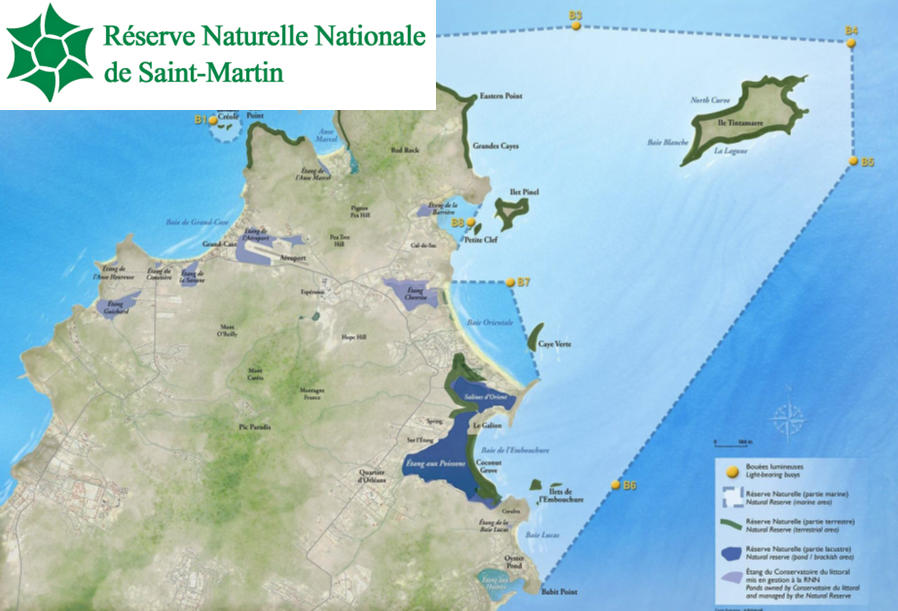
Environment and biodiversity
- Place:
Saint-Martin (France)
- Sponsor:
Thierry Vandevelde
- Grand:
€35,000 on 18 January 2022
Project Leader
Association de gestion de la réserve naturelle nationale de Saint-Martin (AGRNSM)
Since the devastating passage of Hurricane Irma in 2017, Saint-Martin has bounced back. This French West Indies island has decided to fight the impact of tourist and commercial boating on the marine reserve. With the support of the Veolia Foundation, the Association de gestion de la réserve naturelle de Saint-Martin is developing a mooring strategy within the Reserve.
Located in the north-east of the Antilles, the island of Saint-Martin has a 30 km² marine protected area. Created in 1998, this area preserves the island's five main ecosystems: coral reefs, mangroves, phanerogam beds, ponds and coastal dry forest.
The preservation of this biodiversity is a major challenge for this French territory and the Association de gestion de la réserve naturelle de Saint-Martin (AGRNSM) has made it the core of its mission. Its objective is to organise the conservation and development of animal and plant species, as well as the associated landscapes and ecological functions.
However, the marine protected area is confronted with a rapidly growing tourist and commercial nautical industry. The growing number of yachtsmen cannot always find space in ports or marinas, or choose not to pay the cost of moorings. The practice affects vast areas of the coastline of Saint-Martin and is not without impact on the environment. It raises the question of the sustainable management of the marine reserve.
The AGRNSM project consists of setting up a strategy to promote a temporary anchoring practice that is more respectful of the environment. The support of the Veolia Foundation will make it possible to purchase mooring buoys and develop a mooring management application that will primarily benefit the Pinel islet, at the heart of the reserve.

